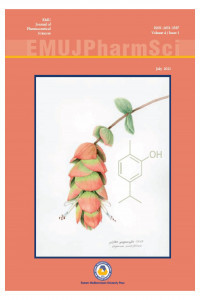A study on life expectancy in Turkey
A study on life expectancy in Turkey
Life expectancy, urbanization, cointegration Granger causality,
___
- Amjad A, Ahmad K (2014). "The impact of socio-economic factors on life expectancy for sultanate of Oman: An empirical analysis".
- Anand S, Ravallion M (1993). Human development in poor countries: on the role of private incomes and public services. J Econ Perspect 7(1): 133-150.
- Baltagi BH, Moscone F, Tosetti E (2011) Medical Technology and the Production of Health Care. Discussion Paper No. 5545.
- Baltagi BH, Moscone F, Tosetti E (2012). Medical technology and the production of health care. Empir Econ, 42(2), 395-411.
- Bayati M, Akbarian R, Kavosi Z (2013). Determinants of life expectancy in Eastern Mediterranean region: a health production function. IJHPM 1(1): 57.
- Bergh A, Nilsson T (2010). Good for living? On the relationship between globalization and life expectancy. World Dev 38(9); 1191-1203.
- Coile C, Diamond P, Gruber J, Jousten A (2002). Delays in claiming social security benefits. J Public Econ 84(3): 357-385.
- Crémieux PY, Ouellette P, Pilon C (1999). Health care spending as determinants of health outcomes. Health Econ 8(7): 627-639.
- Delavari S, Zandian H, Rezaei S, Moradinazar M, Delavari S, Saber A, Fallah R (2016). Life Expectancy and its socioeconomic determinants in Iran. Electron Physician 8(10): 3062.
- Dickey DA, Fuller WA (1981). Likelihood ratio statistics for autoregressive time series with a unit root. Econometrica 1057-1072.
- Engle RF, Granger CW, Rice J, Weiss A (1986). Semiparametric estimates of the relation between weather and electricity sales. J Am Stat Assoc 81(394): 310-320.
- Fayissa B, Gutema P (2005). The Determinants of Health Status in Sub-Saharan Africa (SSA). The American Economist, 49(2), 60-66
- Grosse RN, Auffrey C (1989). Literacy and health status in developing countries. Annu Rev Public Health 10(1): 281-297.
- Gujarati DN (1995). Basic Econometrics, (3-rd ed.). McGraw-Hill International Editions. New York.
- Halicioglu F (2011). Modeling life expectancy in Turkey. Econ Model 28(5): 2075-2082.
- Husain AR (2002). Life expectancy in developing countries: a cross-section analysis. BDS 28(1/2): 161-178.
- Johansen S (1992). Cointegration in partial systems and the efficiency of single-equation analysis. J Econom 52(3): 389-402.
- Kabir M. (2008). Determinants of life expectancy in developing countries. JDA 185-204.
- Kakwani N (1993). Performance in living standards: An international comparison. J Dev Econ 41(2): 307-336.
- Messias E (2003). Income inequality, illiteracy rate, and life expectancy in Brazil. Am J Public Health 93(8): 1294-1296.
- Mohan R, Mirmirani S (2007). An Assessment of OECD Health Care System Using Panel Data Analysis. Bryant University.
- OECD (Organisation for Economic Co-operation and Development). Available online: https://data.oecd.org/healthstat/life-expectancy-at-birth.htm.
- Phillips PC, Perron P (1988). Testing for a unit root in time series regression. Biometrika, 75(2): 335-346.
- Phillips PC, Ouliaris S (1988). Testing for cointegration using principal components methods. JEDC 12(2-3): 205-230.
- Preston SH (1980). Causes and consequences of mortality declines in less developed countries during the twentieth century. In Population and economic change in developing countries (pp. 289-360). University of Chicago Press.
- Rogers RG, Wofford S (1989). Life expectancy in less developed countries: socioeconomic development or public health. J Biosoc Sci 21(2): 245-252.
- Rogot E, Sorlie PD, Johnson NJ (1992). Life expectancy by employment status, income, and education in the National Longitudinal Mortality Study. Public Health Rep 107(4): 457.
- Shaw JW, Horrace WC, Vogel RJ (2005). The determinants of life expectancy: an analysis of the OECD health data. South Econ J 768-783.
- Taban S (2006). Turkiye’de saglık ve ekonomik buyume arasındaki nedensellik iliskisi. Sosyo Ekonomi 2(4): 31-46.
- Thornton J (2002). Estimating a health production function for the US: some new evidence. Appl Econ 34(1): 59-62.
- Wilkinson RG (1992). Income distribution and life expectancy. BMJ 304(6820): 165.
- Zhang J, Zhang J, Lee R (2001). Mortality decline and long-run economic growth. J Public Econ 80(3): 485-507.
- ISSN: 2651-3587
- Başlangıç: 2018
- Yayıncı: Doğu Akdeniz Üniversitesi
Urolithins and their antimicrobial activity: A short review
Omar AMMAR, Mehmet İLKTAÇ, Hayrettin Ozan GÜLCAN
A study on life expectancy in Turkey
Evaluation of the recommended treatment and preventive measures of COVID-19
Hananeh KORDBACHEH, Ahmet AYDIN, Sonia SANAJOU, Gönül ŞAHİN
The genus Persicaria (Polygonaceae) in Turkey with a new taxon record
Mustafa KESKİN, Zeki SEVEROĞLU
Negar KHEZRİ, E. Vildan BURGAZ
Emine Dilek ÖZYILMAZ, Tansel ÇOMOĞLU, Roya NOURMOHAMMADİ
